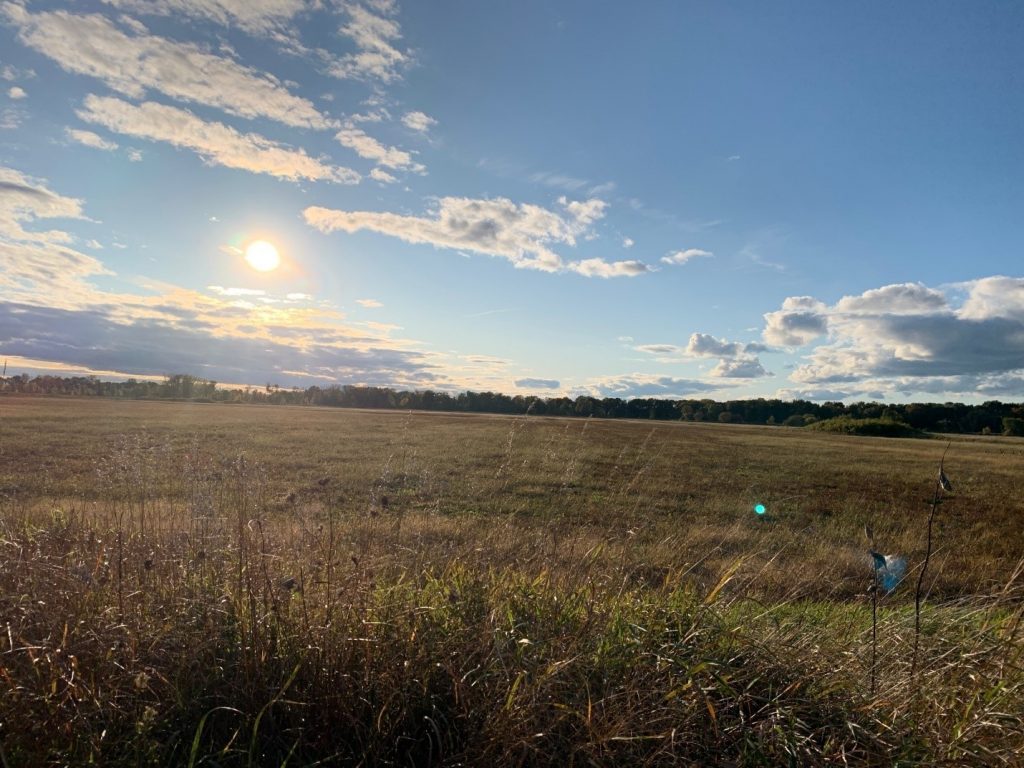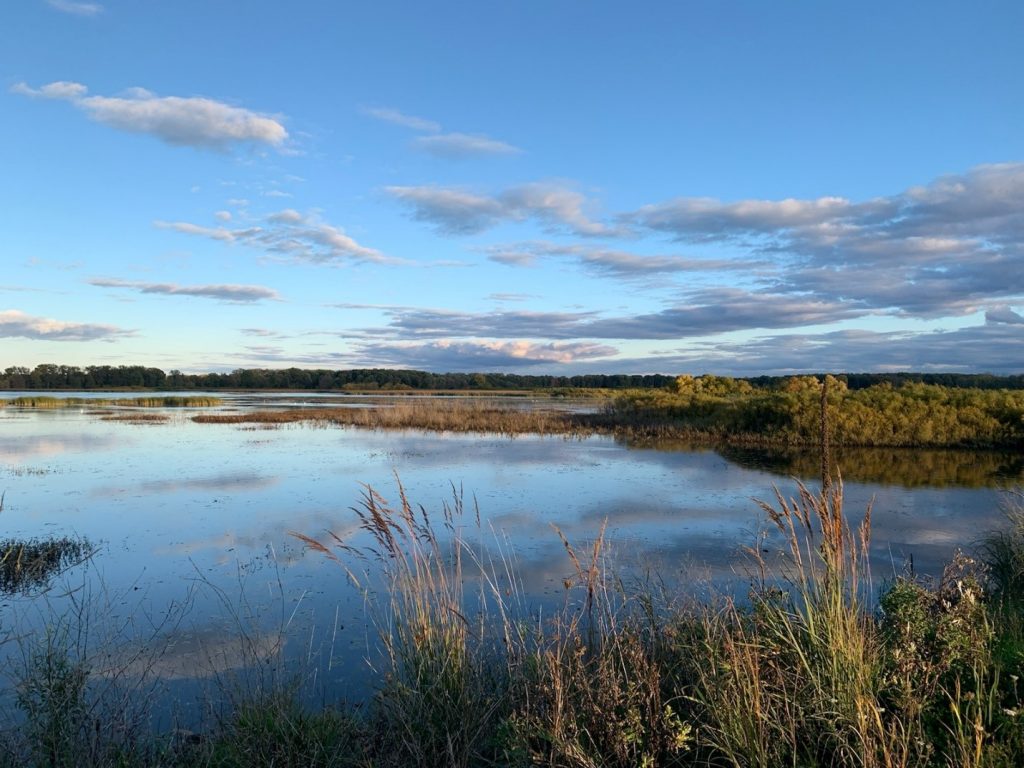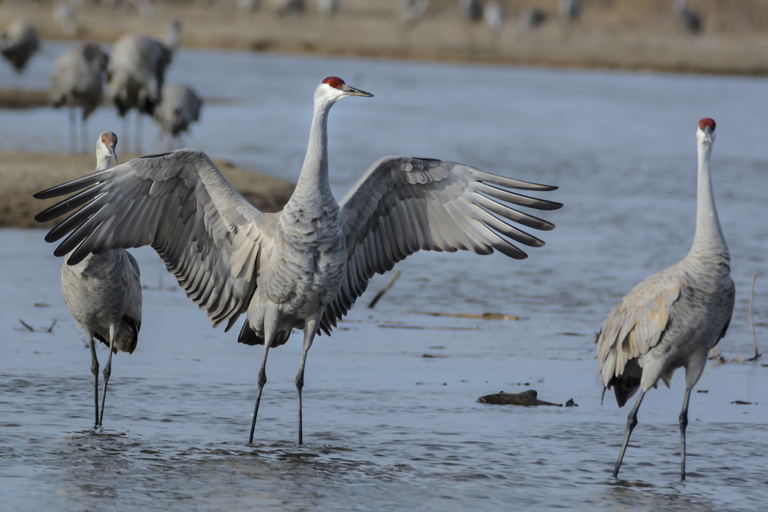It’s the beginning of November, and that means we have just completed our annual crane survey! Every year around this time, we partner with the USFWS to conduct a survey on the beautiful Shiawassee National Wildlife Refuge. This survey provides an estimate of the size and trend of the Sandhill Crane population in the area. Before the actual survey, it’s my job to scout out exactly what parts of the refuge the cranes are using for resting, foraging and roosting during their migration south.

Crane Scouting
So, what does “crane-scouting” entail? Firstly, a knowledge of birds and birding in general. It is easy to misidentify a large flock of birds in the distance. There are plenty of Canada geese and Tundra Swans flying in and around that could be mistaken for cranes without a trained eye. Knowing the cranes’ flight pattern, flock formation, and body shape while flighted and far away is important. It is easier to count the number of individuals in the air before they land out in the distance in large groups. Secondly, you should know their vocalizations, which in my opinion, are super cool! Click here to hear what a Sandhill Crane sounds like, and here to hear what a large flock sounds like. Sandhill Cranes are very noisy birds and you can hear them in the distance throughout the refuge during their time here (up to 2.5 miles away!) Keep your eyes and ears open during the next couple weeks and see if you can catch a flock moving through.

When I have a good idea of what areas of the refuge the cranes are using, I make note of it on a map. Our team then heads out on survey day to camp within view of these areas, but not too close. There are usually three to four stations, and we look for cranes flying in just before sunset. If the cranes land at your station, you add them to the total number of cranes for that area. The information is them submitted to USFWS for their data and research.
This year, the refuge manager, Pam, and a refuge biologist, Adam, joined us for the survey with some other friends from USFWS and the DNR. We set up three stations and counted over 2.000 cranes that had already roosted for the night and almost 1,000 more total that came in to join them between 5 and 6pm.

We are very lucky to be able to participate in surveys like this in our own area. Saginaw and our surrounding area support a rich biodiversity that can sometimes be overlooked. These cranes have also been known to hang out in public areas and parks and rely on people for snacks. If you see a crane, please enjoy them from a safe distance and know that feeding them is detrimental to their survival skills and can be dangerous for both of you. Have you seen any cranes or other birds on their migration south? We’d love to hear about it!
Happy birding!
Mia, Manager of Conservation and Education
